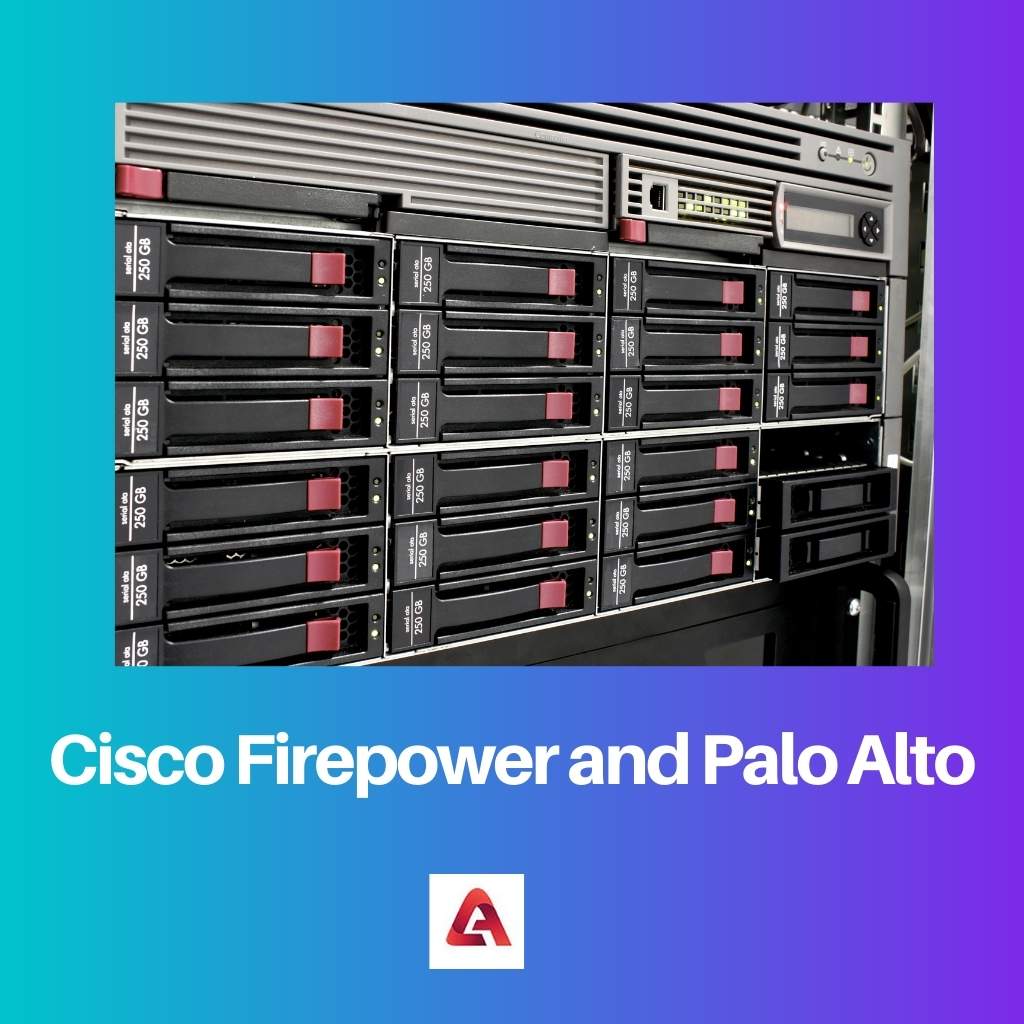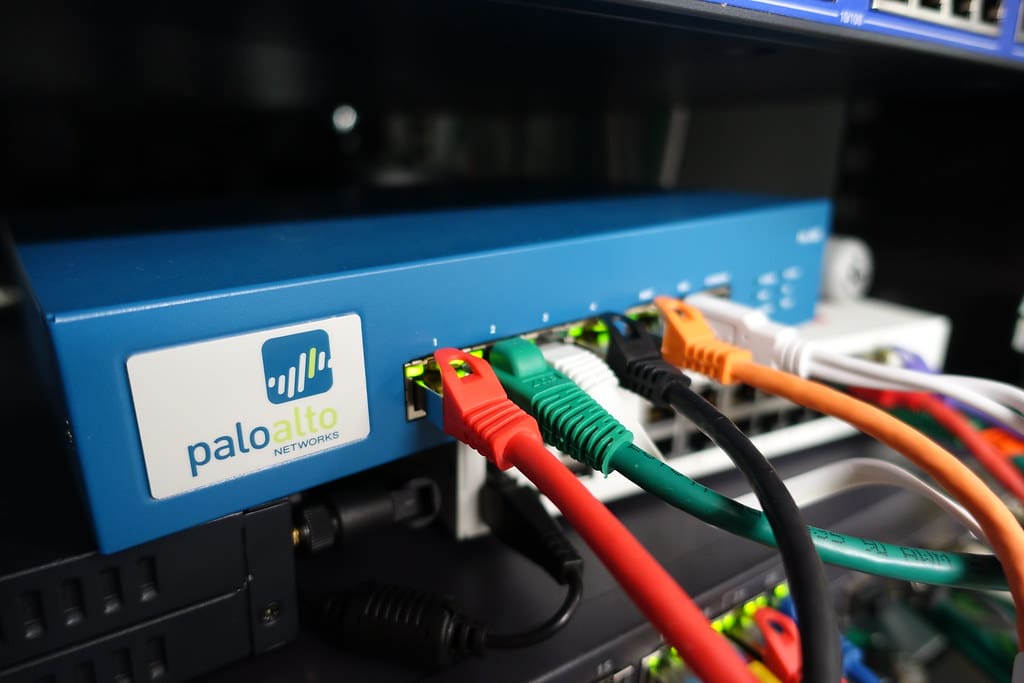Next-generation firewall (NGFW) is a firewall technology of the third generation. It has features like DPI (Deep packet inspection) and IPS (Intrusion Packet System).
The two main and common types of NGFW available in the market are Cisco Firepower and Palo Alto. Both services have distinct differences.
Key Takeaways
- Cisco Firepower provides a comprehensive security platform, integrating firewall, intrusion prevention, and advanced malware protection.
- Palo Alto offers next-generation firewalls with application visibility, threat prevention, and secure access service edge (SASE) capabilities.
- Both solutions deliver robust network security, but Cisco Firepower may be more suitable for larger enterprises, while Palo Alto caters to a wider range of organizations.
Cisco Firepower and Palo Alto
Cisco Firepower is a security product from Cisco Systems known for being cost-effective, and it allows industries and companies that need different security features to integrate with a firewall. Palo Alto is a security product launched by Palo Alto Networks that has advanced features for security threats and traffic.

Cisco Firepower is ideal for companies and industries that require a broad range of security services that can integrate with the firewall and ensure protection. Firepower provides additional features and does not exclusively focus on security.
On the other hand, Palo Alto has advanced features and can perform better. It can provide all threats and traffic irrespective of the device. It is ideal for companies that exclusively want complete protection and security and to remove the existing vulnerabilities.
Comparison Table
| Parameters of Comparison | Cisco Firepower | Palo Alto |
|---|---|---|
| Parent company | Cisco Systems | Palo Alto Networks |
| Pricing scheme | On an annual basis, the one-time plans are cost-effective but the additional maintenance services can make it expensive | On an annual basis, the schemes have several features with a high price |
| Features | Wireless switching, firewalls, routing, IPS and IDS items, and easy tracking of every active and inactive user | VPN, BGP, and route-based services, Automatic Verdict, and single sequential pile processing during data processing |
| Advantages | Effectively highlight and helps in catching Zero-day vulnerabilities, all unauthorized users can be tracked and the traffic can be estimated | Effective traffic scanning in a single flow and improves the response time of every user and helps in smooth functioning of the network |
| Disadvantages | The interface is not user-friendly. The performance, intelligence unit, and central management tool can be improved, CPU gets drained, uses multiple modules for the processing of data The process of installation and deployment is not easy and simple. | The cloud size of Palo Alto is big from the perspective of product management. The customer and technical service does not provide quick and effective solutions |
What is Cisco Firepower?
Cisco Firepower is a type of NGFW. It provides exclusive features like wireless switching, firewalls, routing, and others. The dashboard of the Cisco Firepower is intuitive and contains all the requisite features.
Cisco Firepower has ranked 9th in the domain of firewalls worldwide. Cisco Firepower effectively highlights and helps in catching Zero-day vulnerabilities that could be travelling across a given network.
It provides application awareness and intrusion protection. Originally, Firepower was called ASA. It lacked several features which have been updated in the Firepower version. The new version helps in easy tracking of every active and inactive user.
Cisco Firepower has similar features as that of Fortinet FortiGate. The most distinguishable features of Firepower are IPS and IDS items. They help in the evaluation of all vulnerable loopholes.
All unauthorized users can be tracked, and the traffic can be estimated. Other protection features include inspection, URL filtering, and others. Any hardware can be quickly replaced without the requirement of a network outage.
There are some drawbacks of Cisco Firepower, too. It uses multiple modules for the processing of data at a given time frame and does not follow single sequential pile processing.
The management becomes difficult at times. The CPU gets drained, and the performance level can be improved. It also requires downtime of maintenance windows sometimes.
What is Palo Alto?
Palo Alto is a type of NGFW. It has extensive security features with updated management integrations. Palo Alto is a consistent platform. Palo Alto has ranked 1st in the domain of firewalls worldwide.
It has features like VPN, BGP, and route-based services, which are very valuable for networks. It is a complete product.
Palo Alto helps in effective traffic scanning in a single flow. It helps in improving the response time of every user and helps in the smooth functioning of the network.
The most exclusive feature of Alto Palo is Automatic Verdict, as it can recognize every threat extend. It provides quick updates during any security attack to all the subscribers who have access.
The product has Unit 42 of the intelligence unit. It follows pilot-passed processing and undergoes single sequential pile processing during any data processing. The same stream of data is not put across multiple modules at the same time.
There are some drawbacks, too, like the process of installation and deployment is not easy and simple. The cloud size of Palo Alto is big from the perspective of product management.
The customer and technical service do not provide quick and effective solutions. The automation in reporting is quite low. The services offered are quite expensive and may not suit all kinds of customers.

Main Differences Between Cisco Firepower and Palo Alto
- Cisco Firepower provides an integrated web-based access GUI, while Palo Alto does not connect to a web-based access GUI.
- Cisco Firepower has a Talos intelligence unit, while Palo Alto has a Unit 42 intelligence unit.
- Cisco Firepower focuses on networking and integrated strategy with protection, while Palo Alto exclusively focuses on security.
- Cisco Firepower has some exclusive features like wireless switching, firewalls, routing, and others, while Palo Alto provides BGP, route-based VPN.
- Cisco Firepower is a cost-effective service, while Palo Alto is an expensive service.



